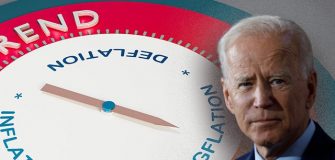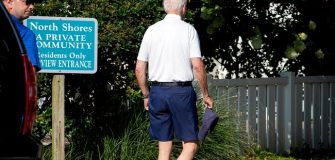Youngest, poorest students suffered most from school closures
Share
Christakis added, “No credible scientist, learning expert, teacher, or parent believes that children aged 5 to 10 years can meaningfully engage in online learning without considerable parental involvement, which many families with low incomes are unable to provide because parents must work outside the home.”
Evidence continued to build, and the American Academy of Pediatrics a few weeks later recommended reopening schools in the fall. That changed when Donald Trump agreed with them, the teachers unions disagreed, Joe Biden’s DNC made it a campaign issue, and the AAP, like so many formerly important institutions, sacrificed its expert credibility to partisan politics.
Never forget that just 11 days after AAP recommended full school openings for the whole school year based on overwhelming science, they reversed and issued a joint political statement with the teachers union. https://t.co/QqXorVtvw0
— Phil Kerpen (@kerpen) April 20, 2021
The people in charge kept denying the obvious truth — that remote schooling was a disaster for children. When Senator Rand Paul in Summer 2000 called for reopening schools, Anthony Fauci cautioned against it, saying, “We don’t know everything about this virus, and we really better be very careful, particularly when it comes to children.”
The full picture of the disaster of extended school closures has steadily come into focus over the last two years. Students have suffered the largest learning loss in a generation, and some cities with lengthy closures are experiencing youth crime waves.
On the one hand it was totally obvious that depriving kids of school would deprive them of learning. On the other hand, we witnessed a parade of education experts and media commentators declaring that learning loss was a myth.
The latest research on learning loss, though, bolsters what we’ve always suspected: the learning loss was real, and it is most acute where remote learning was most difficult.
For instance, current third-graders—the kids who spent Kindergarten and First Grade remotely—have the greatest drop-off in Math and Reading compared to their pre-covid counterparts. If you had a Kindergartener or First Grader at home in 2020, you are not surprised. Remote Kindergarten or remote First Grade was a total joke. A dedicated parent with the free time could passably half-home school a First Grader, of course, but teaching a kid to read requires a lot of effort. Single moms, or two-income busy families didn’t have time for that.
It’s also no surprise that the latest study, from a non-profit called MWEA, found: “students in high-poverty schools and black and Hispanic students have been disproportionately impacted, especially in the youngest grades. As a result, these students still have the most ground to regain.”
The good news is that each year, the average student makes up ground, getting closer to grade level. The bad news is that current third graders, at this pace, won’t catch up until eighth grade.
It’s a grim hangover from our COVID policies, made much more agonizing considering that we knew better.













